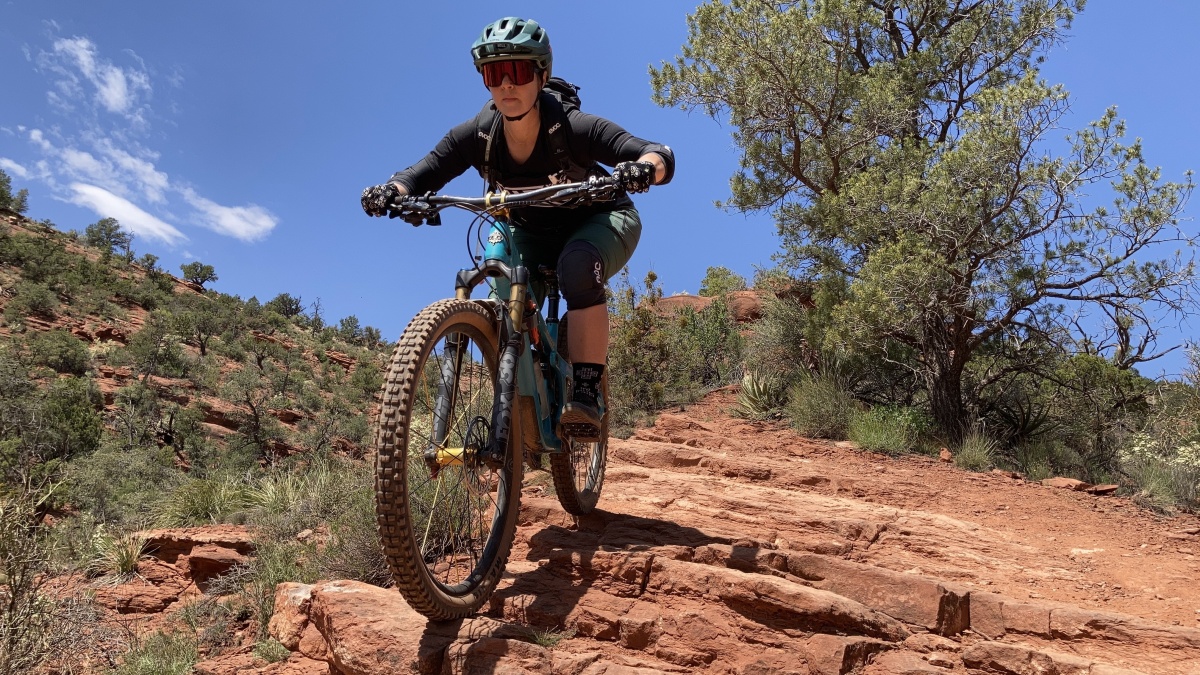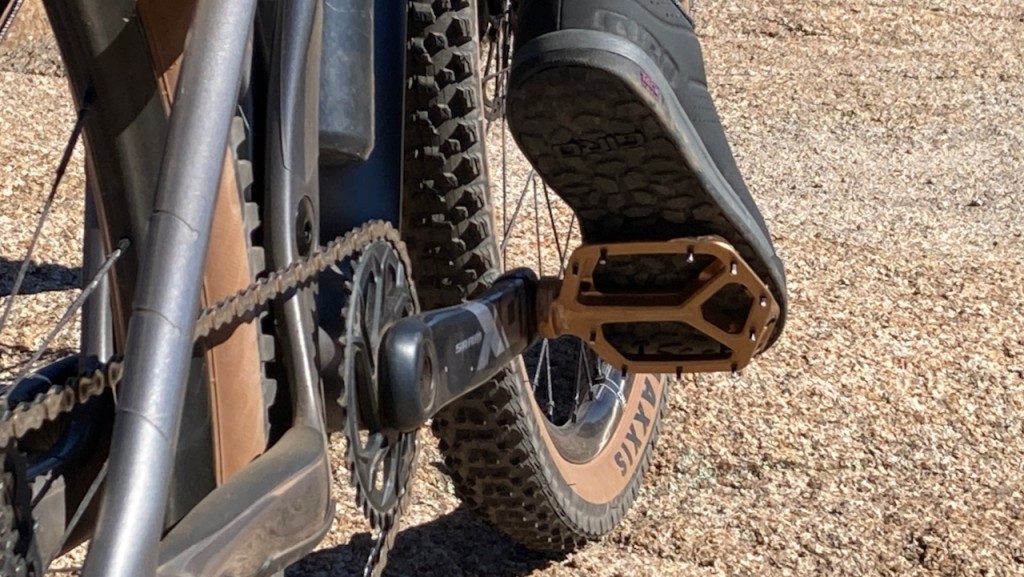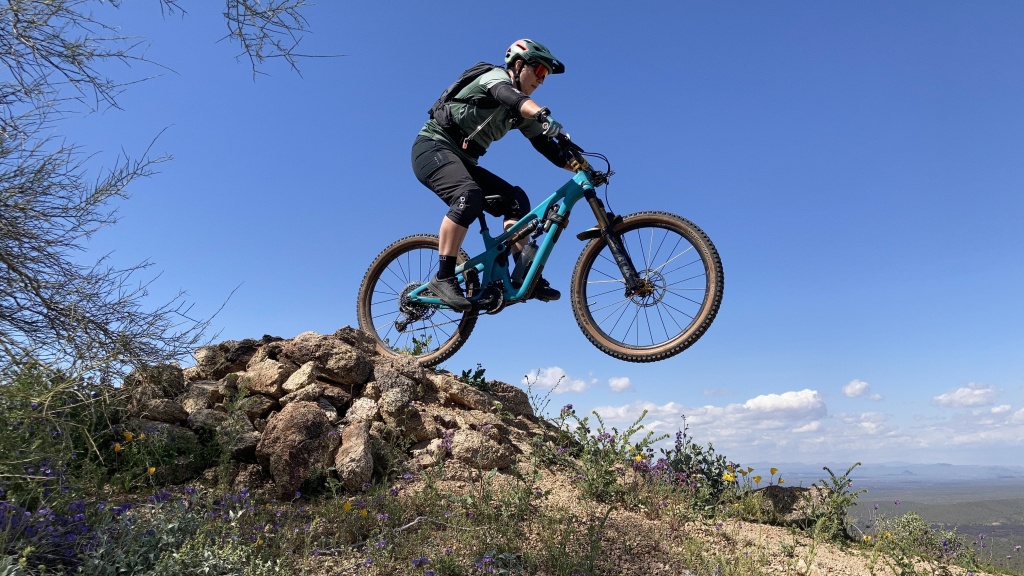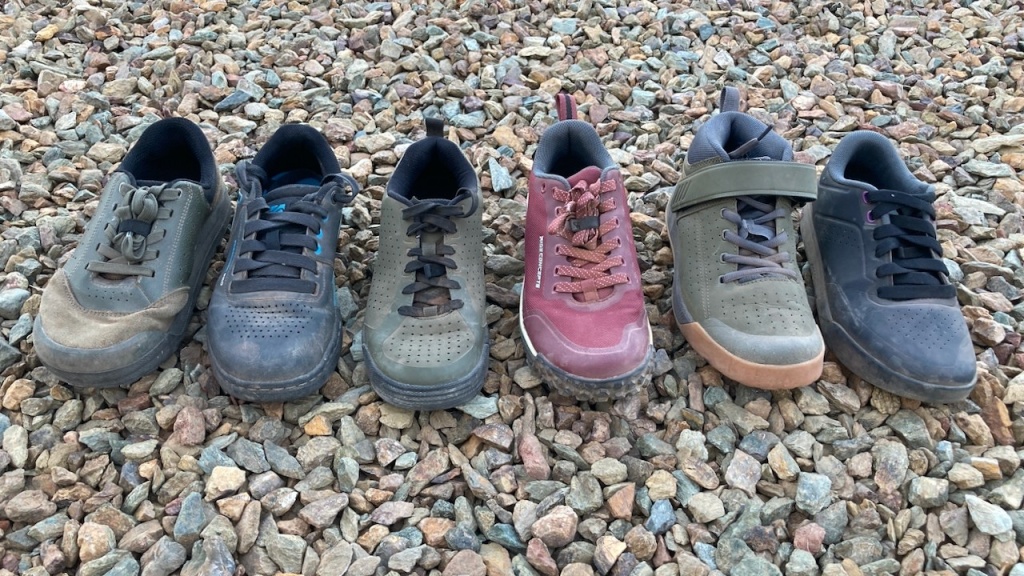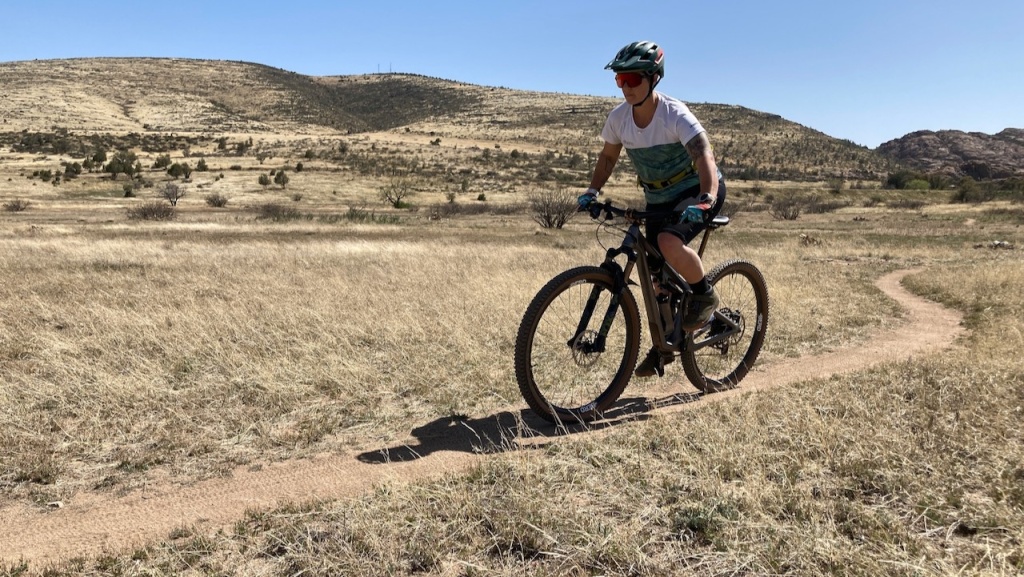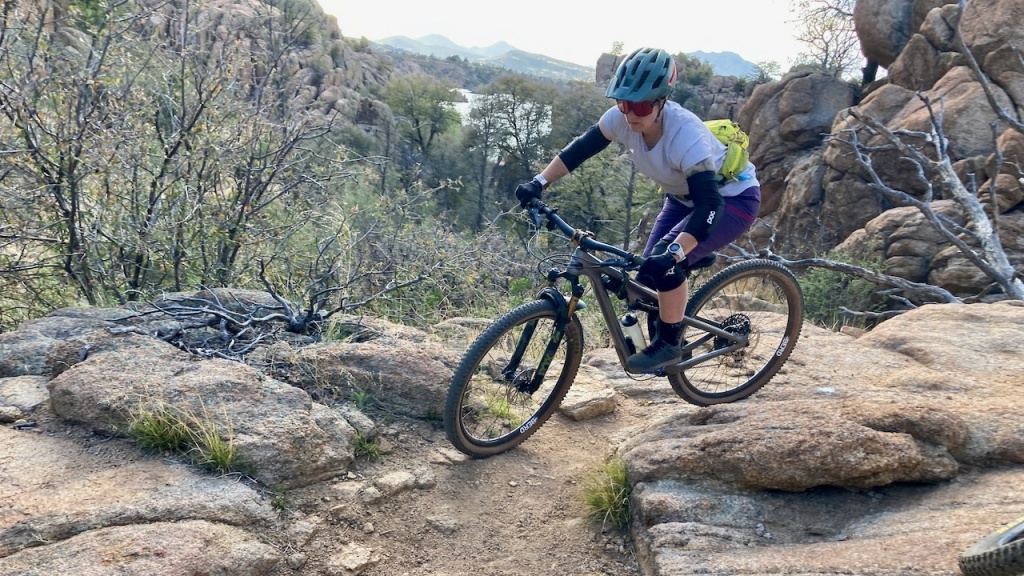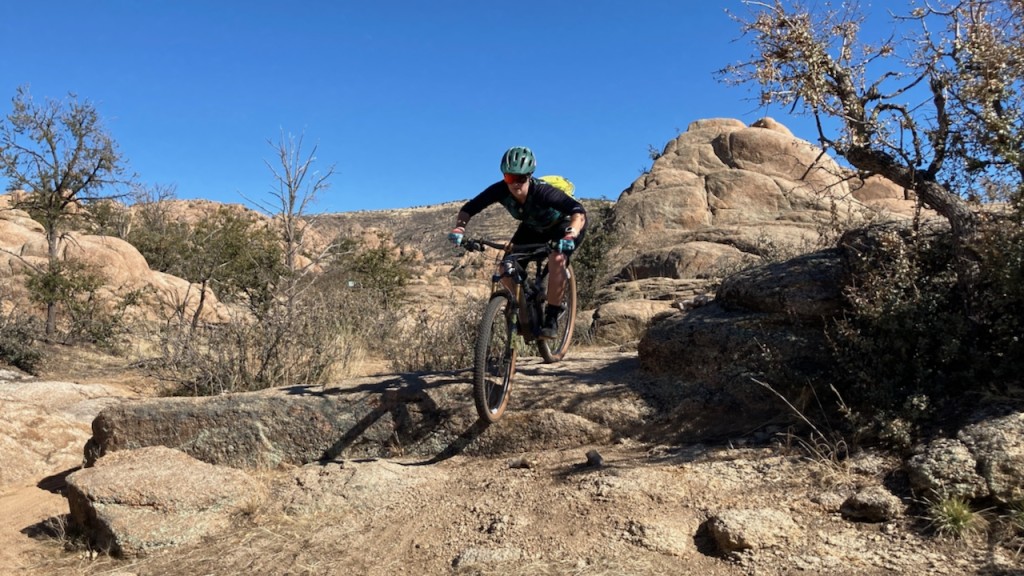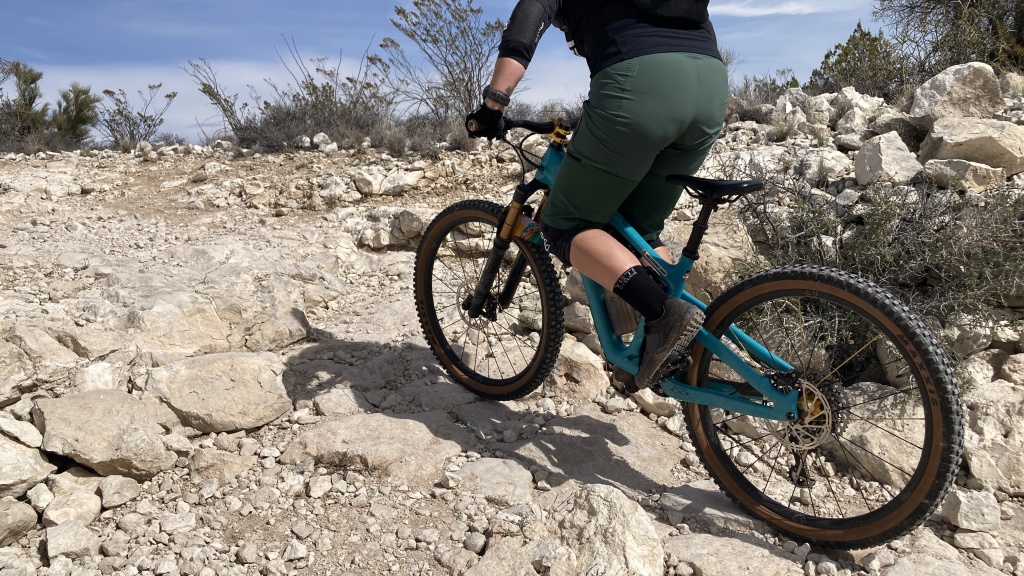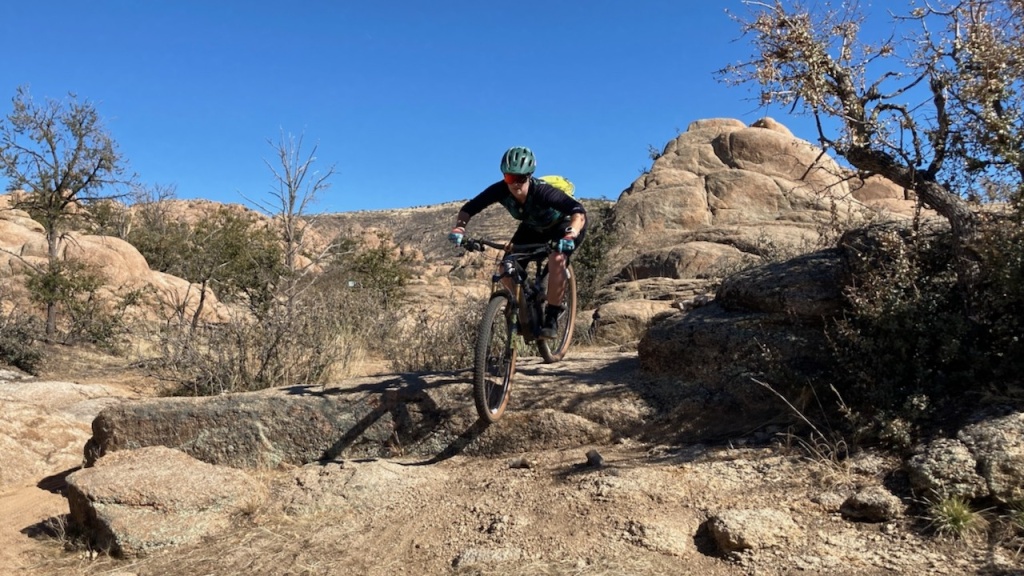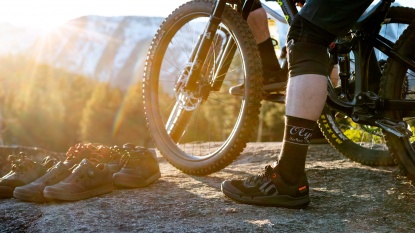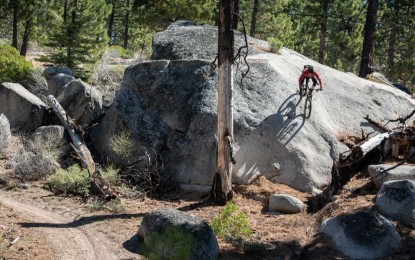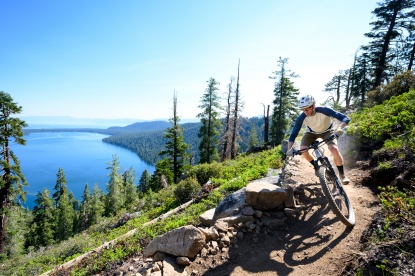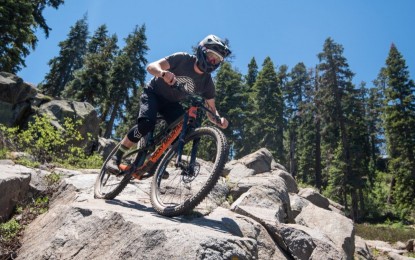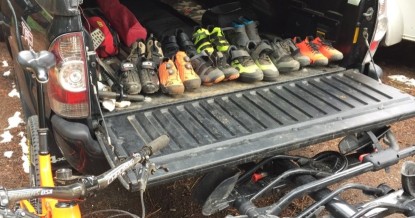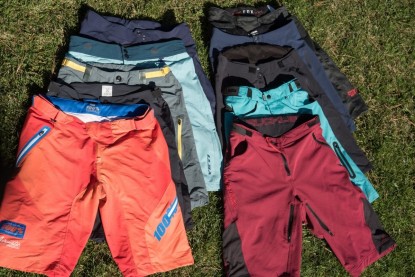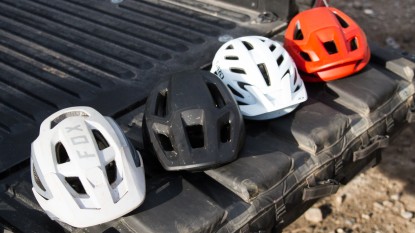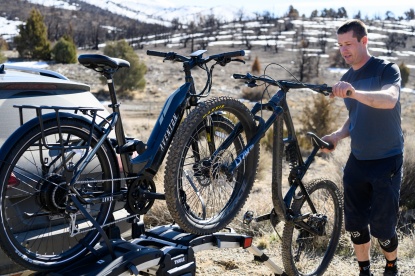Your shoe and pedal interface is incredibly important when you use a flat pedal on your mountain bike. A poor connection between your shoe's sole and pedal can result in your foot slipping and bouncing on the pedal and less bike control. Therefore, it's important to understand how these two components work together and learn about the different types of shoes and pedals before purchasing.
As the name suggests, a flat pedal is a traditional platform pedal. These pedals typically have small pins that bite into the shoe's outsole, which creates a connection between the shoe and the pedal. Flat pedal shoe soles are often made of a soft, grippy rubber that helps the pins on the pedal bite into the shoe's sole.
However, not all rubber is made equal, and there are large differences between manufacturers in how much the rubber grips the pedal and how soft it is. Another factor in flat pedal shoe design is the midsole. This is part of the shoe above the outsole, combining the sole and footbed. The materials used in the midsole can affect how well the shoe stays connected to the pedal. Some materials are designed to dampen forces from the trail preventing the shoe from bouncing on the pedal in rough terrain.
Why Flat Pedals and Shoes?
One advantage is that it allows you more freedom to adjust your foot position on the pedal and to put a foot down. Many riders will say they have more confidence on flat pedals because they can get a foot down quickly without having to unclip, especially when riders are first learning new skills or trying more difficult trail features. Flat pedals also allow you to separate yourself from the bike in case of a crash.
From a technical point of view, flat pedal shoes help you learn proper techniques for maneuvers such as wheel lifts because your foot is not clipped into the pedal. When the time comes to hiking with your bike, flat pedal shoes are generally more comfortable since there is no metal cleat on the bottom to interfere with your foot placement. They also lack a cleat opening, which can easily get caked with mud in wet conditions, which makes clipping difficult.
Some people contend that flats are less efficient to pedal since you can not pull up through the top of the stroke as you can with clipless pedals. However, this is up for debate as some studies show that pulling up on the pedal may not be all it's been cracked up to be and that pedaling efficiency has more to do with your pedal stroke. We'll let you be the judge of this highly debated topic.
What Type of Rider Are You?
Before deciding what shoe to buy, you must determine your preferred riding type. Do you love going cross-country? Hitting the trails or mountains? Or do you prefer downhill riding? Once you decide, you'll be on your way to narrowing down the options.
Cross-Country
If you enjoy flowy trails, minimal features, and long, fast miles, a lightweight, stiff shoe with good power transfer for pedaling efficiency is a top priority.
Cross-country riders favor lightweight, stiff shoes that are easier to spin and reduce fatigue over long distances. Power transfer is also important for cross-country riders, so a shoe with a more rigid midsole and an outsole with excellent grip is what you should look for.
Trail and All-Mountain Riding
If you prefer trails with features, technical challenges, or big descents, you'll likely want a shoe that offers a balance of protection, grip, rigidity, and weight.
Trail and all-mountain riders tend to favor more technical trails and don't shy away from a rock garden or drop and understand that frequently the climb is the price you pay for a sweet descent. We recommend shoes that blend grip, protection, weight, and durability for trail and all-mountain riders. Look for shoes that have impact-absorbing midsoles or insoles and extra protection in the toebox at a minimum.
If you ride less technical trails that don't require as much foot protection, a lightweight shoe with less protection is what you should seek out. Impact-absorbing midsoles and insoles will help to dampen the ride and reduce foot fatigue.
Downhill Riding
When your preferred way to get uphill is on a chairlift, and you love speed, rock gardens, drops, jumps, and berms, look for a shoe that keeps your foot securely planted on the pedal. The shoe also needs to be durable and protective. We recommend designs with a mid-top or asymmetrical collar for lift access days. This additional material at the ankle will help protect the ankle in a crash and provide additional ankle stability.
If you're not a fan of mid-top designs, look for a shoe with extra padding at the collar and in the tongue. This additional padding will help protect the foot in a crash. TPU reinforcement and impact-absorbing midsoles and insoles are also great for gravity riding and help dampen the trail and prevent foot fatigue.
What About Grip?
The grip of your shoe is a crucial factor to consider. The type of rubber used in a shoe's outsole determines how much grip it has. Some manufacturers rate their rubber on a grip scale to help consumers choose the best shoe for their riding style.
Most companies have either developed their proprietary rubbers or have collaborated with reputable rubber companies to develop the outsole of their shoes. Some shoes have a very soft and grippy rubber that pedal pins dig into, creating a strong bond. This type of outsole rubber is preferred for trail, all-mountain, and bike park riding. Other compounds are still grippy and allow for more foot movement. This harder compound is preferred for dirt jumping and slopestyle riding, where the rider must make frequent adjustments or take their feet off the pedals during tricks.
Some companies use Vibram rubber, a popular choice for hiking and approach shoes. While this rubber has a lot of grip on rock and dirt, in our testing, we have found it to be a harder compound that lacks grip on the mountain bike's flat pedals.
Another component of grip is the construction of the shoe's midsole. This layer sits between the shoe's outsole, or sole, and the footbed. From the side, it is the layer between the upper and the sole. Some midsoles are made of shock-absorbing foam such as EVA or other shock-reducing materials designed to decrease vibrations from the trail preventing your shoe from bouncing on the pedal.
Knowing your preferences for how much grip you want between your shoe and pedal can help you make an informed buying decision. We encourage you to learn more about each company's rubber technology. If you like to move your foot on the pedal while riding freely, we recommend looking for a shoe whose rubber is not the grippiest in its line-up. For those who value great grip above all else, we recommend looking for rubber compounds touted as soft and the grippiest.
What About Protection?
Knowing what type of riding you'll be doing can help determine how much protection you'll want in a flat pedal shoe. A lightweight shoe with minimal impact protection might fit the bill well for riders who prefer flow and cross-country trails with minimal features. More impact protection is desirable for those who ride more technical terrain with lots of rocks, logs, or high-speed descents. Many shoes feature impact-absorbing materials in the heel and toe and impact-absorbing midsoles and footbeds.
For riders who spend most of their time at the bike park, having additional ankle protection may be beneficial, especially considering the higher speeds and higher risk for injury. Additional ankle protection can be found in a mid-top or asymmetrical collar design or simply by having additional padding at the foot opening.
Rigidity and Power Transfer
You want your shoe to be rigid enough to apply pressure to the pedals to increase efficiency. Finding the right balance of rigidity and flexibility in a riding shoe is important. A rigid design can be so stiff to the point of pain. A soft shoe can send trail vibrations directly into your feet, causing fatigue and pain. Inside a shoe's midsole is generally a “plate” designed to increase rigidity and allow the rider to push into the pedals for greater power transfer. Companies use different materials to create this rigidity, paired with various materials in the midsole to dampen trail vibrations and keep your feet from bouncing on the pedals.
Breathability
Where you live, the conditions you ride in, and how hot your feet get will determine how much breathability you need in a shoe. Shoes have perforations, mesh panels, and various upper fabrics, all designed to keep your feet cool. Shoes with more protection are generally less breathable than those with less protection. When seeking a breathable design, look for shoes with perforations or mesh panels along the top of the forefoot and the midfoot, designed to increase airflow to the foot.
Durability
How frequently you ride, how you ride, where you ride, and how well you care for your gear greatly affect its durability. If you wear your soft-soled mountain bike shoes to the brewery or out for dinner after riding, you will wear down the soles more quickly than if you reserve them strictly for riding. If you are prone to crashes or wet local trails, you may experience your shoes deteriorating more quickly. We recommend only wearing your mountain shoes when riding to help preserve their rubber outsole and remove the footbeds to help them dry out after they get wet.
Conclusion
There are many factors to consider before purchasing a pair of mountain bike flat pedal shoes, and doing some research and price comparison shopping can go a long way. Before you hit the buy button or head out to the store, list the factors that are important to you in a shoe. If possible, we recommend trying on a few different shoes to see how they fit, which will help you narrow down your choice. Ultimately, we suggest purchasing the shoe that fits best and meets most of your needs.

